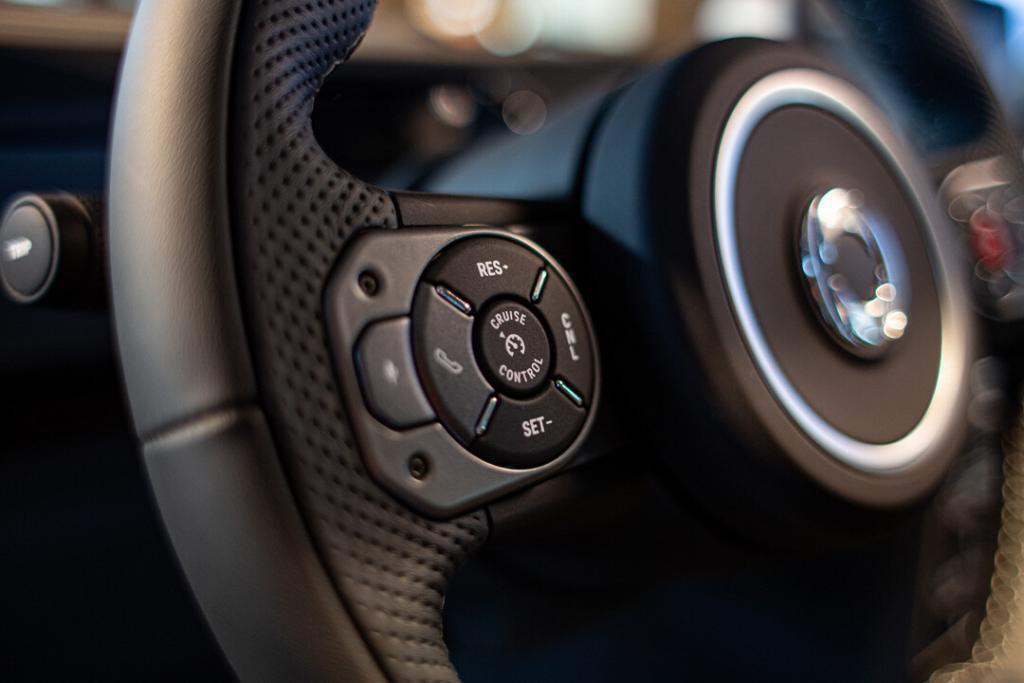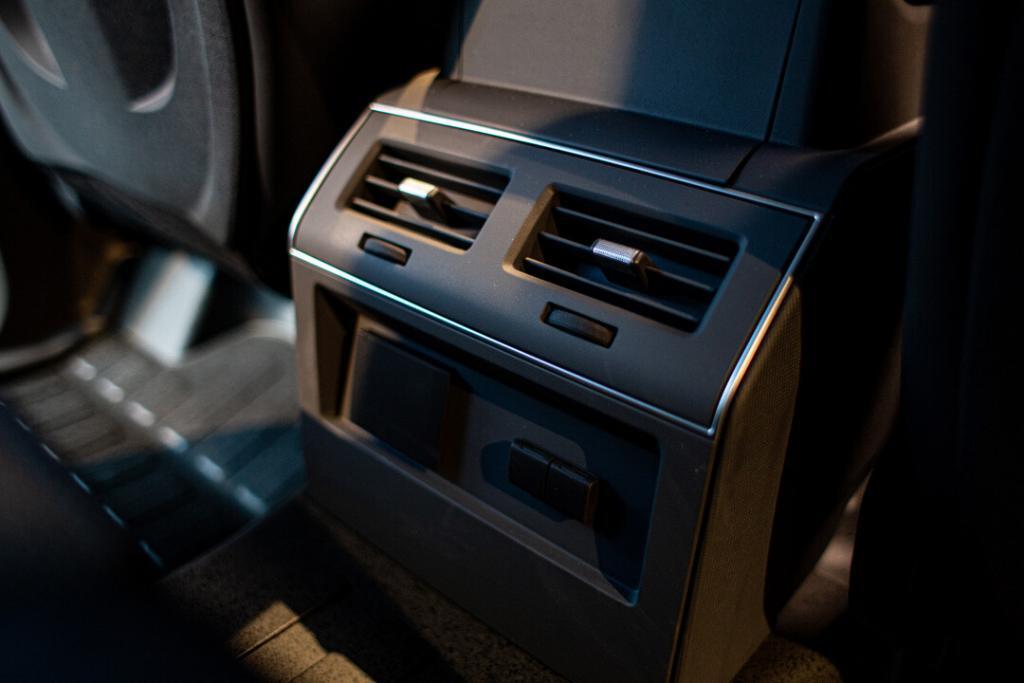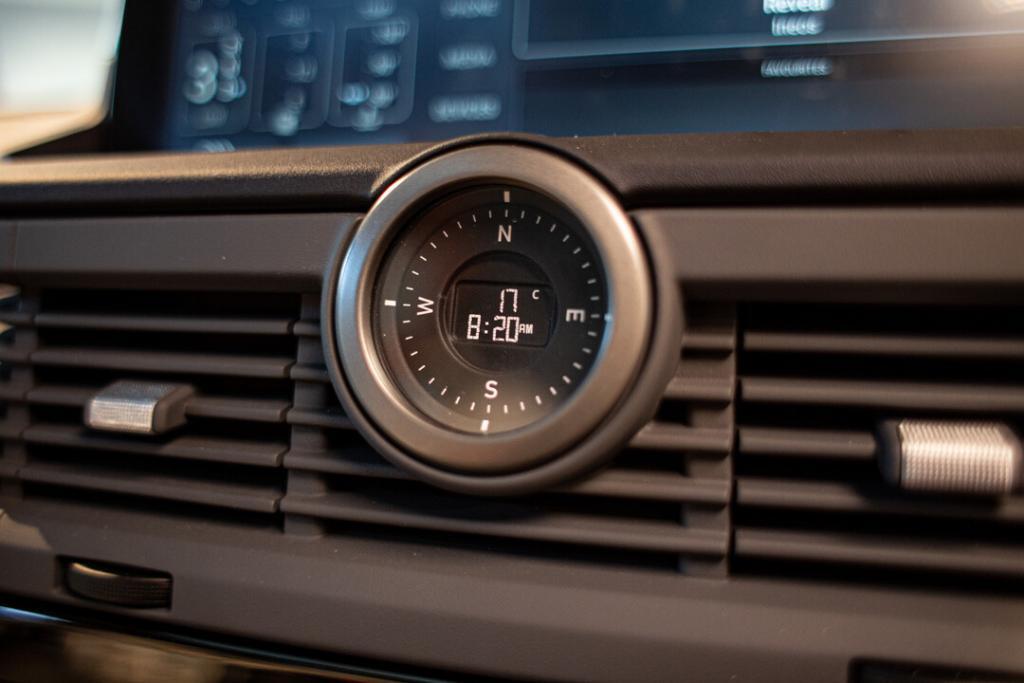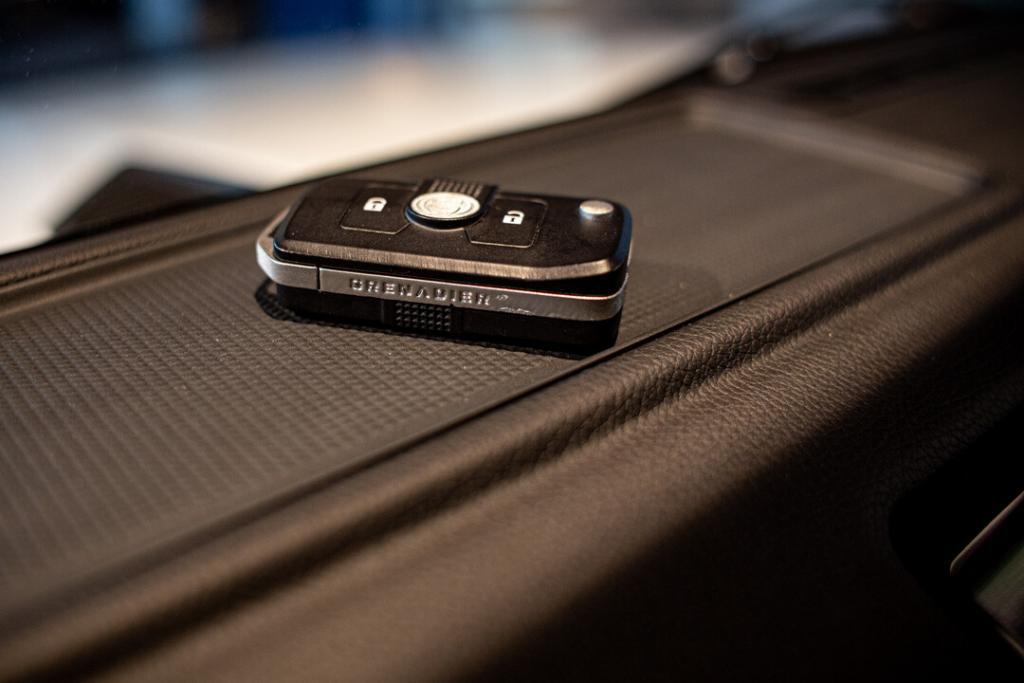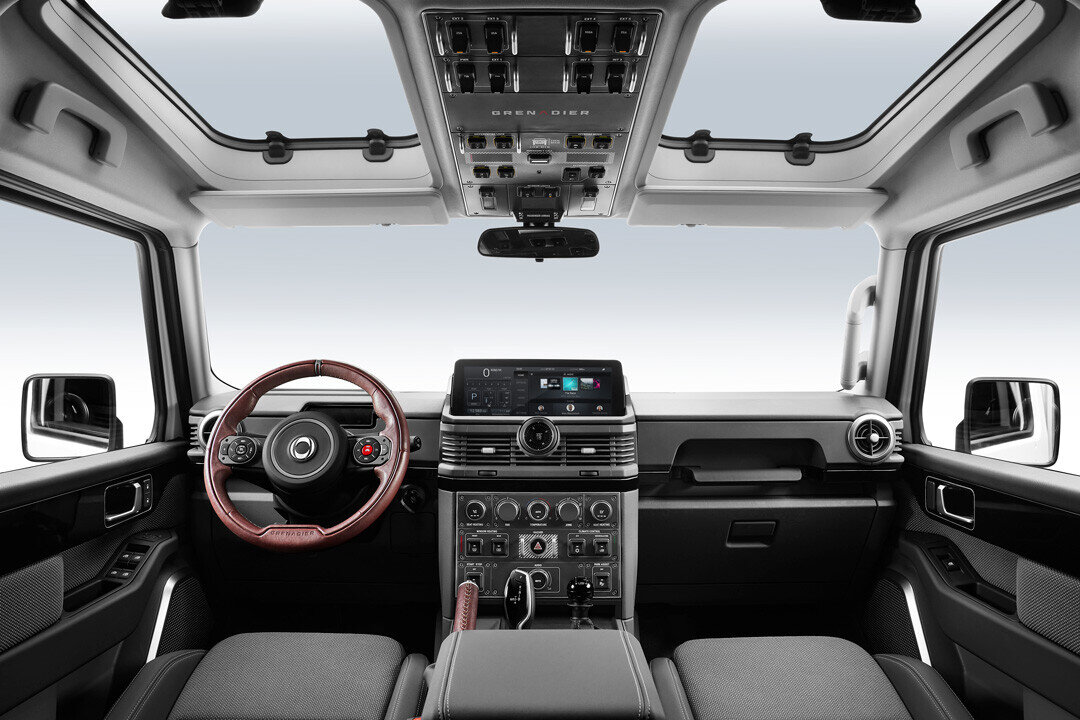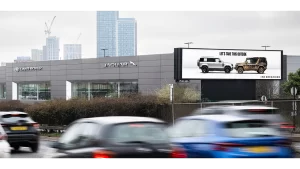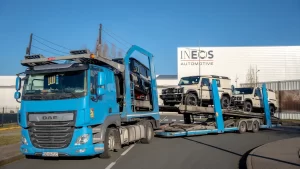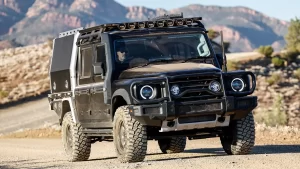“When we started thinking about the Grenadier’s interior, we looked carefully at modern aircraft, boats, and even tractors for inspiration, where switches are sited for optimal function, regular controls are close to hand, auxiliary ones are further away,” said Toby Ecuyer, Head of Design. “You can see the same approach in the Grenadier: the layout is functional and logical, designed with ease of use in mind. It has everything you need and nothing you don’t.”
SPACE
Positioning myself behind the steering wheel of many a modern car more often than not ends with disappointment. Why? Because large exterior bodies promise more than their cramped interiors can keep.
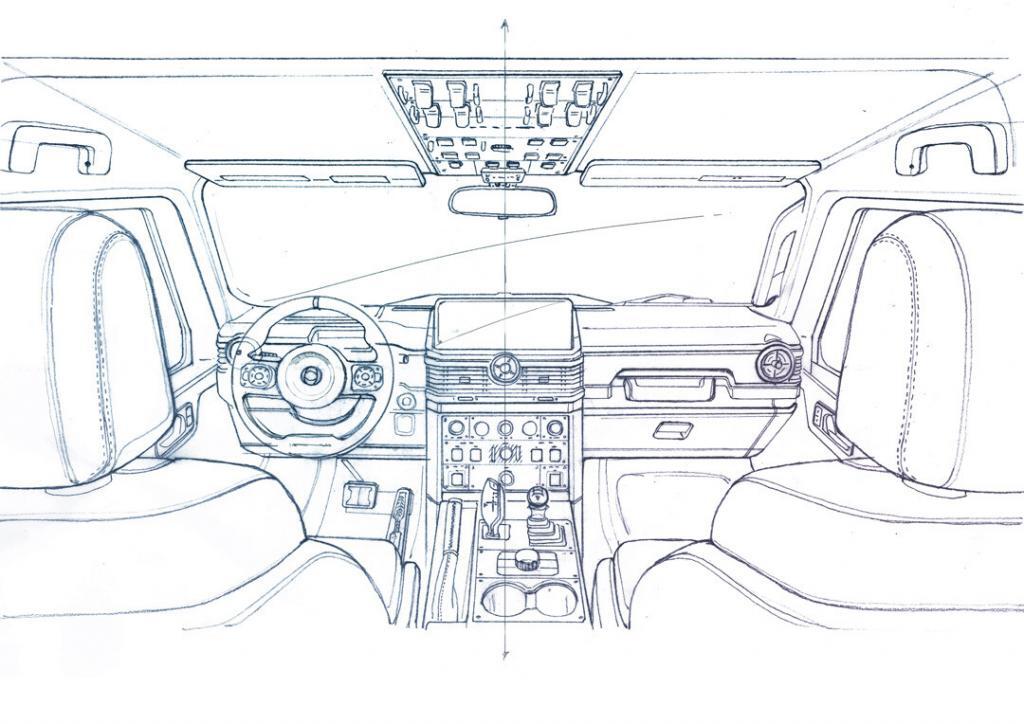
So, when I climbed into the Grenadier’s lofty driver seat, my faith in vehicle designers was promptly restored. In a reflex motion, I lifted the seat release and pushed back with my legs which, unexpectedly, almost fully extended. The steering wheel was way too far away. I pulled the seat forwards again for a more controlled position and took in the moment: the comfortable Recaro seat offered excellent support; my left shoulder did not butt against the B-pillar; there was enough headroom to account for any vertical movement in rough terrain; my right leg wasn’t unduly supported by the transmission tunnel. The steering wheel can be adjusted for tilt, reach and rake.
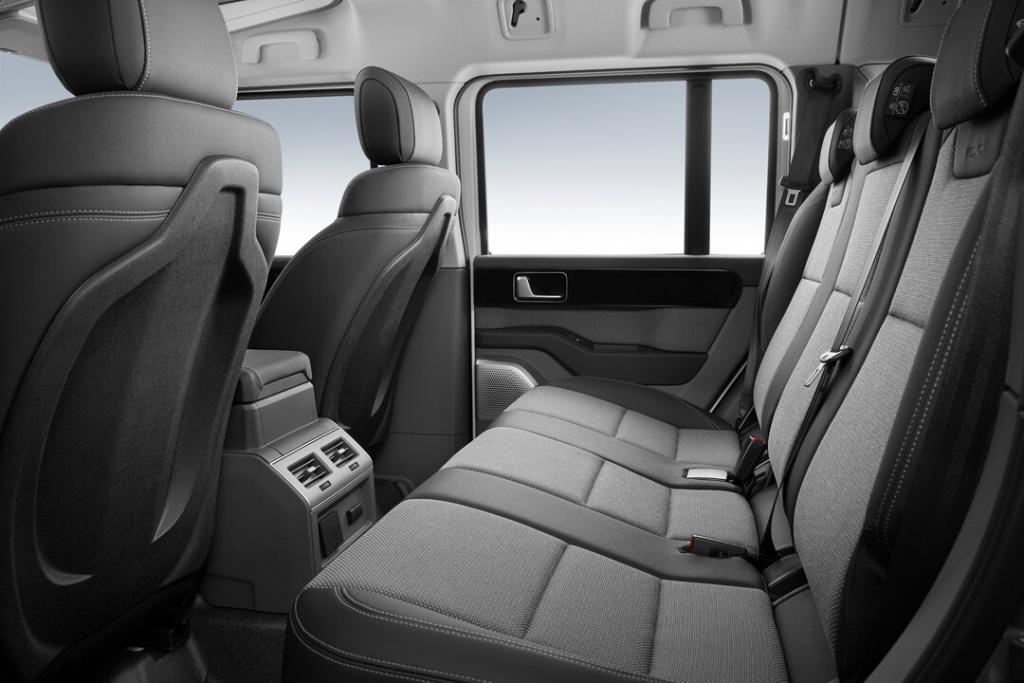
The second-row seats are divided 60:40 and provide good leg space for adults which is benefited by the scalloped driver and front passenger seat backs.
The Grenadier may have a narrow frame, but the interior is remarkably spacious.
ERGONOMICS
The company’s claim that the Grenadier is Built on Purpose has echoed through development of the chassis, suspension, drive train, and bodywork. Glancing across the dashboard and the theme continues. The creators have drawn upon the experience and attention to detail invested into a flight deck, bridge or even the cockpit of a sophisticated modern tractor.
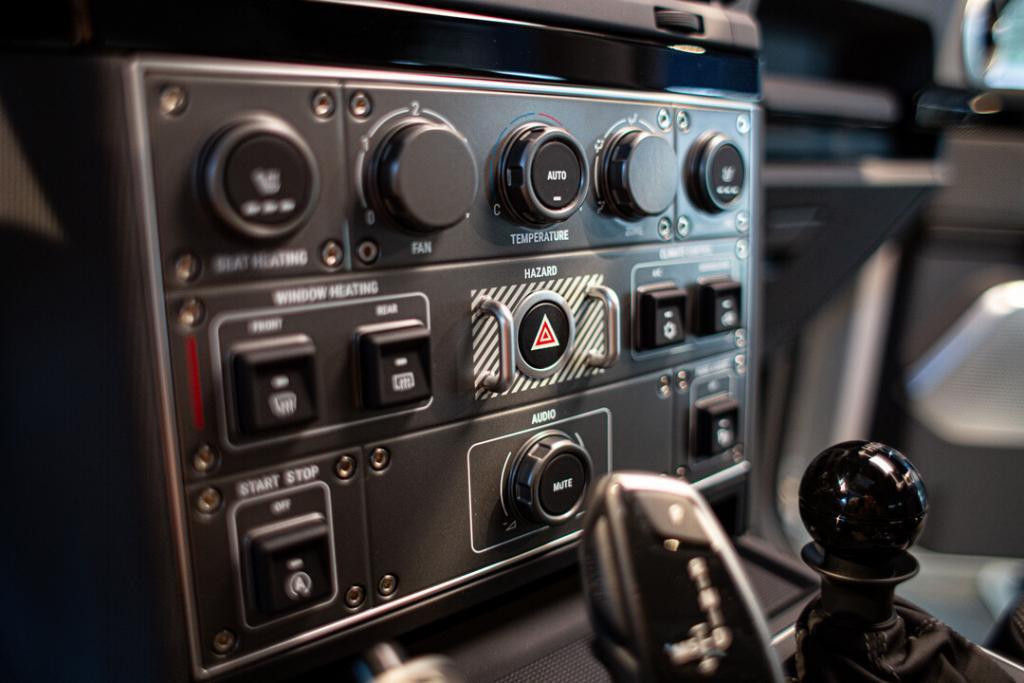
THE DRIVER NEEDS INFORMATION – As such, the panel directly behind the steering wheel, and just below the driver’s line of sight, provides warnings and indicates the engagement of auxiliary equipment.
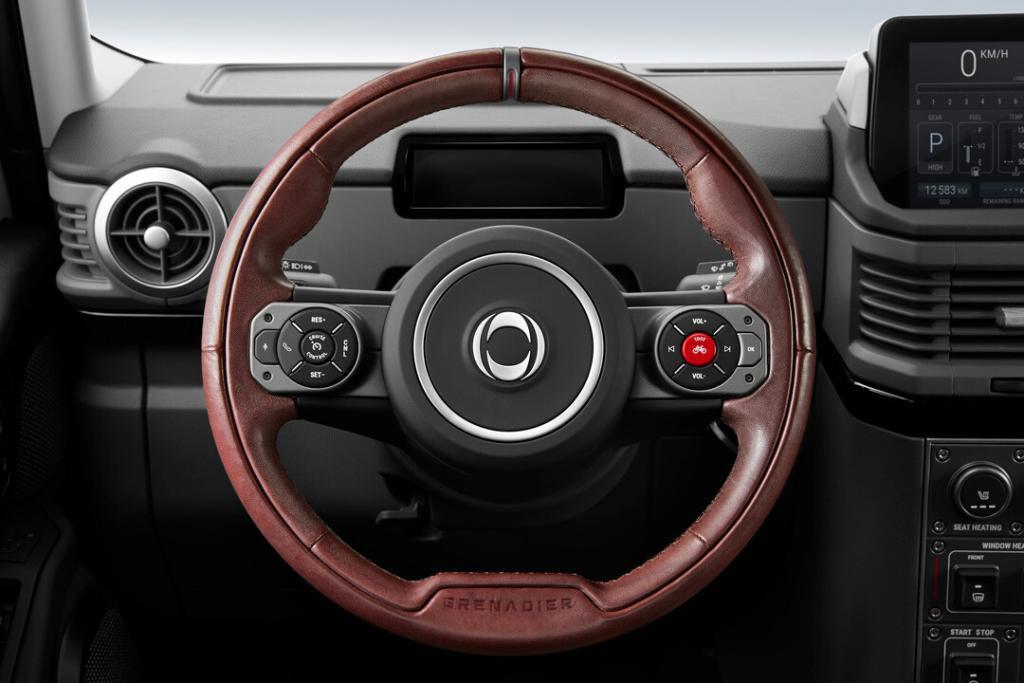
INTUITIVE AND FUNCTIONAL LAYOUT – Between the seats and extending into the roof, two panels house widely spaced and clearly labelled toggle switches and dials. The lower panel is dedicated to frequently used controls, the overhead console for less readily required functions. Whether with or without thick winter gloves, the driver will quickly become accustomed to the location of a particular control and its actuation is clearly confirmed. When the driver needs to concentrate on navigating difficult terrain, the passenger is able to operate diff locks and other auxiliary equipment.
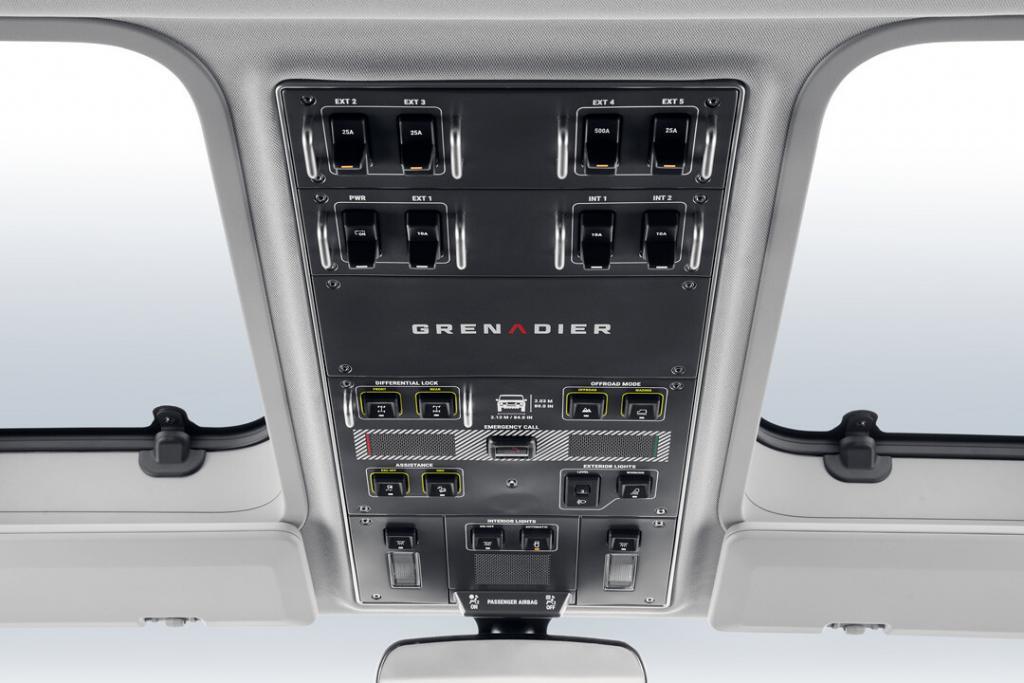
Anticipating the necessity for a customer to configure the vehicle according to individual requirements, further switches have been built in and pre-wired to support the addition of winches, work lights, and other accessories.
Advanced technology is included only where it benefits functionality and usability. The infotainment system is accessed via a 12.3-inch touchscreen, or by using a rotary dial between the front seats. The Apple CarPlay and Android Auto integration means users can rely on smartphone navigation which will always be up to date. And the off-road pathfinder navigation system allows drivers to programme, follow, and record their route via waypoints, when roads and tracks are left behind.
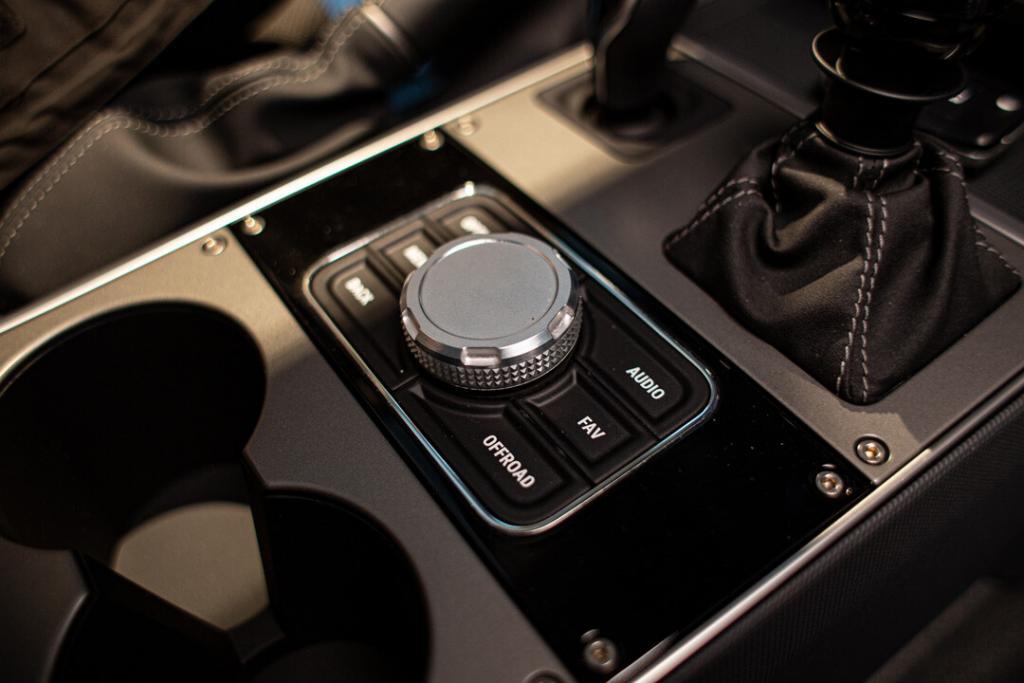
VISIBILITY
The vast expanse of windows gives the driver a clear view of everything going on around the vehicle. However, I couldn’t help but notice how surprisingly narrow the A-pillars are. Not only that, but the cladding is tapered in such a way as to minimise intrusion of the line of sight.
Directly above the driver’s and front passenger seats are two glass panels which can either be tilted for improved ventilation, or removed so that you can stand on the seat. This may be useful when driving through awkward terrain, fording a river, or monitoring wildlife.
DURABILITY
Hard-wearing surface materials throughout the interior, reflect the Grenadier’s arduous intent. Drain plugs in the rubber flooring and wipe-down, water-resistant, anti-stain upholstery mean the interior, other than the dashboard and control panels, can be hosed out.
Carpets and leather upholstery will be available for those aiming to leave the mud and sand outside.
STOW AND LOAD
In the passenger area, stowage space has been maximised, with a dry storage box under the rear seat, a lockable central console cubby box, and ample compartments in the doors.
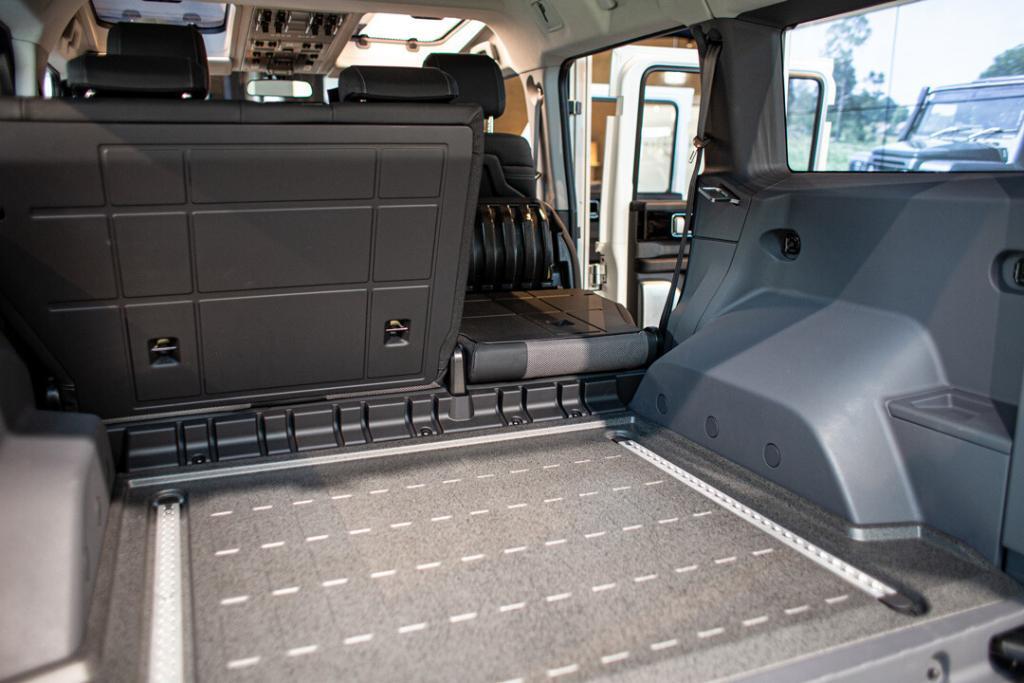
In the load area behind the second-row seats, there are securing points on each side, and the floor (in the vehicle I saw) was equipped with airline rails. If more space is required, the rear seats can be folded flat which does entail a slight step in the floor. However, the accessory list includes a drawer system for the load area that has the same height as the folded seats to create a level loading area from the rear door to the back of the front seats.
SUITABLE FOR OVERLANDING?
The Grenadier’s interior comfort, layout, materials, and functionality are equally suited to overlanding as they are to any number of work environments. To quote Dirk Heilmann, INEOS Automotive’s CEO, “Inside and out, the Grenadier has been designed to do a job – to get people and their kit where they want to go in comfort, in control and with no fuss. It just works.”
Photography: INEOS & Tristan Brailey
